You’ve probably stood there before—board waxed, leash strapped, salt in the air—staring at the horizon trying to figure out which wave to chase. But let’s be honest: sometimes it feels like the ocean’s speaking in riddles. You watch locals glide effortlessly across perfect walls of water, while you’re left bobbing in the foam, wondering if you missed a silent cue.
Here’s the truth: surfing isn’t just about riding waves. It’s about reading them—understanding them. It’s about tuning in to the sea’s rhythm, knowing when to wait and when to charge. Once you grasp how to read a surf break, you’re no longer guessing. You’re flowing with purpose.
And that’s what this guide is here for—to teach you how to see the ocean not as a mystery, but as a map.
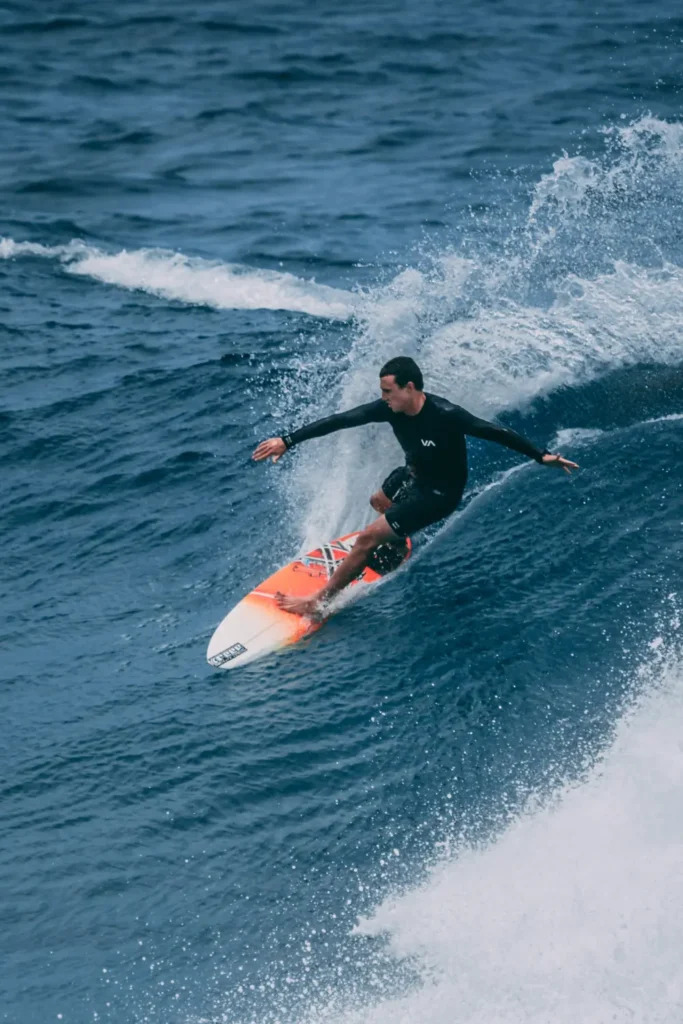
Table of Contents
Breaking Down the Surf Break: The Foundations
Understanding a surf break is like learning the grammar of the ocean’s language. Once you decode the patterns, you stop reacting—and start anticipating.
What Exactly Is a Surf Break?
At its core, a surf break is where a wave transforms from open-water energy into a rideable form. This happens when ocean swells hit a change in the seafloor—like a reef, sandbar, or rocky point—and that energy lifts, curls, and finally breaks.
Every surf break is shaped by four main things:
- Seafloor (bathymetry): Sand, reef, rock, or a mix
- Swell direction and size
- Wind conditions
- Tide level
All of these factors combine to determine if the wave will barrel, crumble, peel, or shut down in a closeout.
Common Types of Surf Breaks
Let’s decode the main categories:
Beach Break
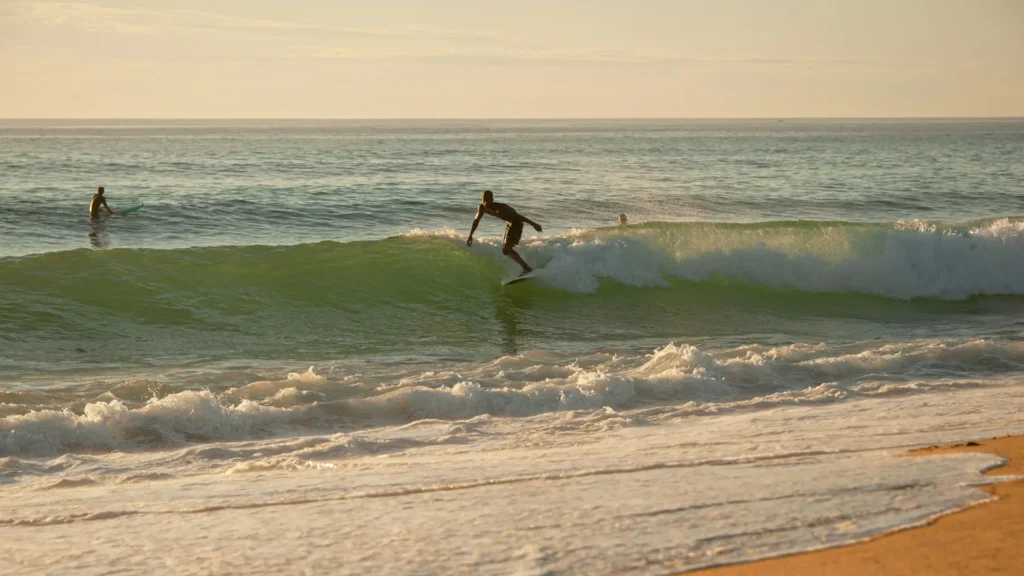
Beach breaks are the most accessible and forgiving type of surf break, making them an ideal starting point for beginners and casual surfers. Because the bottom is made of sand, these breaks shift frequently due to tides, currents, and storms, meaning the waves can vary drastically even within the same day. While that can make them unpredictable, it also keeps things interesting—you’ll constantly be adapting, improving your wave-reading skills in the process.
- Bottom: Sand
- Wave Type: Variable, often good for beginners
- Example: Huntington Beach, California
Point Break

Point breaks are considered a prized type of surf break because of their consistency and length. Unlike beach breaks that shift with the sand, a point break often delivers clean, predictable waves that peel perfectly along a rocky headland or sandbar. This type of surf break allows you to ride longer, giving you more time to read the wave, adjust your line, and execute turns with precision. It’s a spot where skill development thrives—if you can find your place in the lineup.
- Bottom: Rock or sand around a headland
- Wave Type: Long, peeling
- Example: Rincon, California
Reef Break
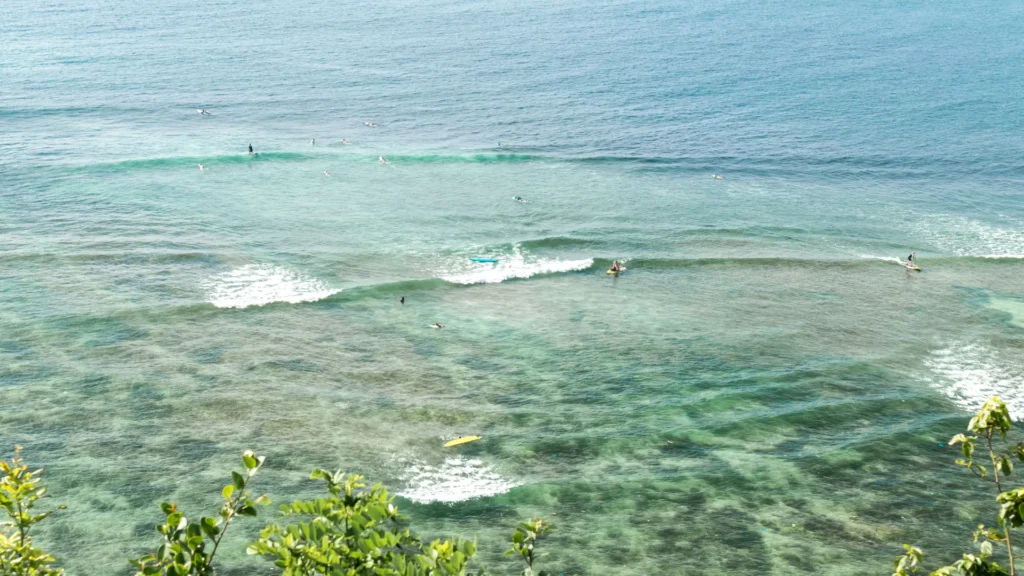
A reef break is a powerful and often hollow type of surf break that forms when ocean swells hit a sharp, stationary underwater reef made of coral or rock. These waves tend to break in the same place every time, offering consistency and well-defined barrels that attract experienced surfers looking for high-performance rides. However, the shallow and unforgiving nature of the reef means there’s little room for error—one mistake can lead to serious injury.
- Bottom: Coral or rock
- Wave Type: Powerful, consistent, often barreling
- Example: Pipeline, Hawaii
Rivermouth Break
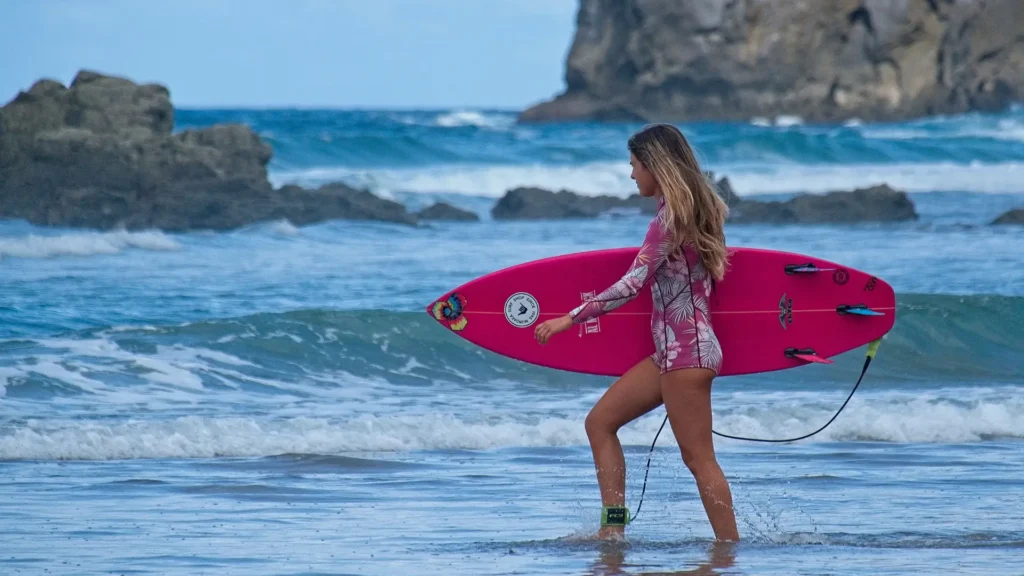
Rivermouth breaks are a unique type of surf break formed where rivers flow into the ocean, creating shifting sandbars that can produce clean, well-shaped waves. These breaks often offer a balance between the consistency of point breaks and the variability of beach breaks, making them a favorite among intermediate surfers. Because sediment from the river constantly reshapes the bottom, each session at a rivermouth surf break can bring subtle differences in wave behavior, keeping you on your toes and sharpening your wave-reading instincts.
- Bottom: Sand and silt from river outflow
- Wave Type: Predictable, clean shape
- Example: Mundaka, Spain
Each break offers different rewards—and risks. Knowing how to spot them means choosing your wave with clarity instead of hope.
How to Analyze Wave Conditions Like a Local
Once you know the break type, the next skill is reading the day’s conditions. Great surfers aren’t just great riders—they’re great analysts.
1. Swell Direction & Size
Every break works best under specific swell directions. For instance:
- Pipeline loves a northwest swell.
- Rincon fires on a west swell.
- Hossegor gets punchy on northwest energy.
Check forecasts and compare historical patterns to figure out the optimal swell angle for your local break.
| Break | Optimal Swell Direction | Ideal Swell Size |
|---|---|---|
| Pipeline | NW | 6–10 ft |
| Trestles | SW | 3–5 ft |
| Uluwatu | S | 4–8 ft |
Larger isn’t always better. A 10-foot closeout teaches you nothing but humility. Focus on quality over quantity.
2. Wind: The Hidden Sculptor
Waves are molded by wind. Here’s how:
- Offshore wind: Blows from land to sea, holding waves up and making them clean and hollow.
- Onshore wind: Blows from sea to land, crumbling wave faces and creating chop.
Your ideal session starts early in the morning or late in the evening when winds are lighter and offshore.
3. Tides: Timing the Pulse
Tides can change a break from magic to mayhem. Depending on the bottom contour, you’ll want to surf:
- Beach breaks: Often best at mid-tide
- Reef breaks: Typically fire at higher tide
- Point breaks: Can work at almost any tide with the right swell
Use apps like MagicSeaweed, Surfline, or Windy to match tide predictions with break characteristics.
4. Wave Period: Don’t Overlook the Interval
Many surfers skip this—don’t be one of them.
- Short period (5–8s): Weak, choppy, wind-driven waves
- Medium period (9–12s): Decent power and shape
- Long period (13s+): Powerful, long-traveling swells
Longer periods mean more water volume and better-defined sets.
How to Choose the Best Wave in a Set
You’ve paddled out. You’re sitting in the lineup. Now what?
Spot the Good Wave from the Bad One
Learn to read the lineup like a living diagram:
- Look for a peak: The highest point where a wave will break first
- Shoulder: The open face where you’ll ride
- Closeout: A wave that breaks all at once across the face—avoid it
Recognizing Set Patterns
Watch the ocean in 10-minute cycles. Sets usually come in 3–5 wave clusters. Be patient, watch a full cycle before rushing in.
Right vs. Left
Decide based on your stance and comfort:
- Goofy-footers (right foot forward) often prefer lefts
- Regular-footers (left foot forward) prefer rights
You’ll also want to scan for locals and respect the pecking order—surf etiquette is real, and essential.
Building Surf Intuition: It’s a Skill, Not a Superpower
You’ve seen it: the surfer who paddles straight into the best wave every time. That’s not luck—it’s pattern recognition, earned over hundreds of sessions.
Keep a Surf Journal
After each session, log:
- Date and time
- Location
- Tide level
- Swell direction and size
- Wind conditions
- How the session felt
Over time, patterns emerge. You’ll know when to surf your favorite spot—and when to sleep in.
Mental Training
Before paddling out:
- Visualize the break
- Imagine catching different waves
- Picture how you’ll move and react
This kind of mental rehearsal sharpens awareness, especially under pressure.
Advanced Techniques: Going From Good to Great
Once you’ve got the basics, you can start mastering finer points.
1. Paddle Positioning
Stay in the channel (the calm area next to where waves break) and only move into the impact zone when you’re ready.
Use markers—buildings, rocks, trees—to maintain your position in the lineup.
2. Reading Rips and Currents
Rip currents often form next to breaking waves. Use them to paddle out quickly, but avoid them when riding in.
3. Handling Crowds
- Wait your turn: Don’t snake someone already paddling
- Communicate: A loud “left” or “right” avoids collisions
- Respect locals: Every break has its unspoken rules
Quick Reference Table: Conditions by Break Type
| Surf Break Type | Ideal Swell | Best Wind | Tide Preference | Skill Level |
|---|---|---|---|---|
| Beach Break | Small–Medium (3–5 ft) | Light Offshore | Mid Tide | Beginner – Intermediate |
| Point Break | Medium–Large (4–8 ft) | Moderate Offshore | All Tides | Intermediate – Advanced |
| Reef Break | Medium–Heavy (6–10 ft) | Light Offshore | High Tide | Advanced Only |
| Rivermouth | Small–Medium (3–6 ft) | Offshore | All Tides | Intermediate |
Conclusion:
You’re not just learning how to surf—you’re learning how to listen. The ocean speaks in pulses, in rhythm, in foam and fury. The more you understand how to read a surf break, the more fluent you become in its language.
And when you’re fluent, you no longer chase waves. You anticipate them. You align with them. You choose with confidence.
FAQ : How to Read a Surf Break
How do I avoid closeouts?
Look for waves that peel from a central peak. Closeouts break all at once—peelers give you a clean shoulder to ride.
What’s the best surf break for beginners?
Beach breaks offer forgiving conditions. Look for small, consistent swell and sandy bottoms.
Do wave periods really matter?
Yes. A 14-second wave carries more power and size than a 7-second wave—even if their faces look the same.
How long should I watch the waves before paddling out?
At least 10 minutes. You’ll get a feel for set timing, peak location, and crowd dynamics.


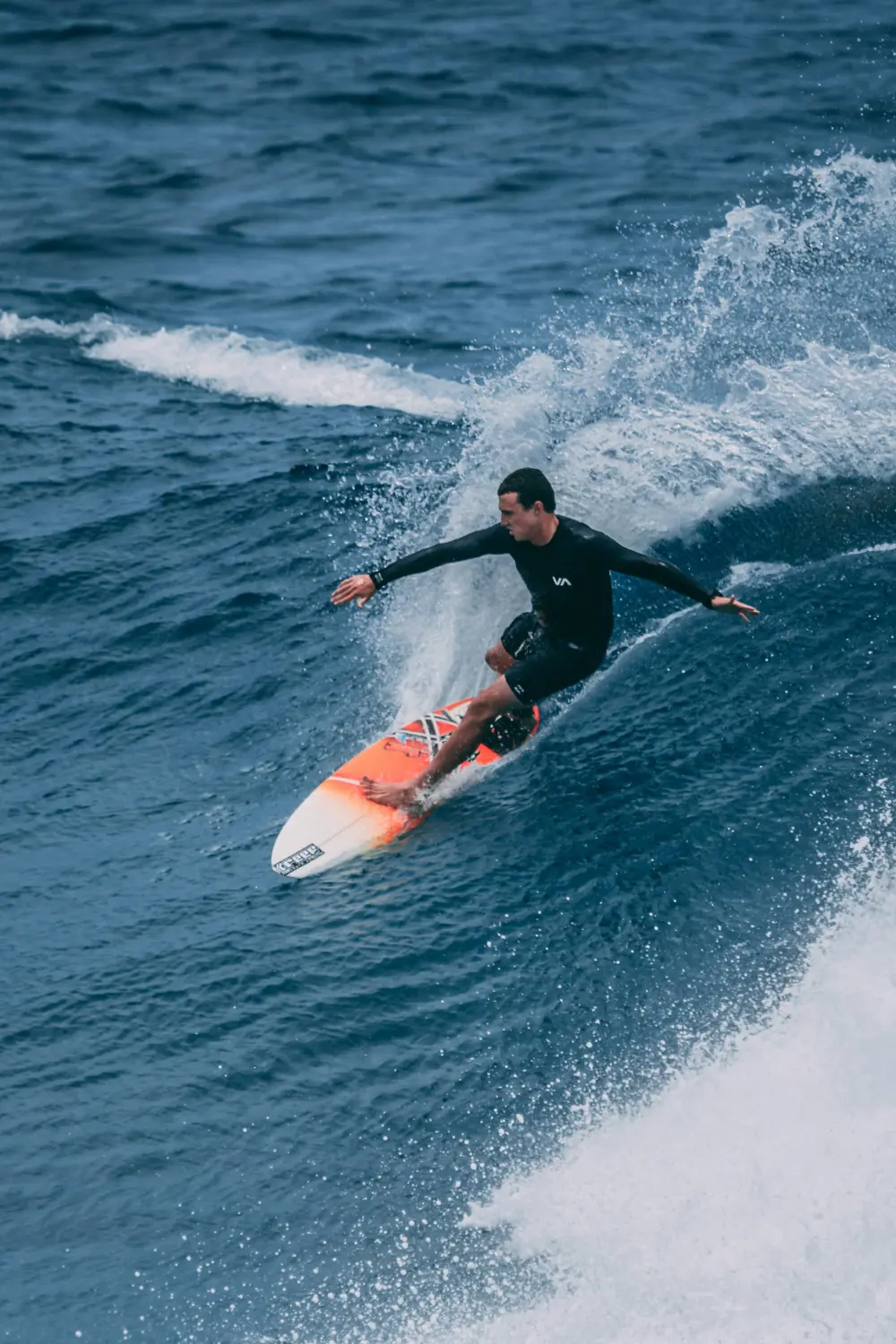





Leave a Reply